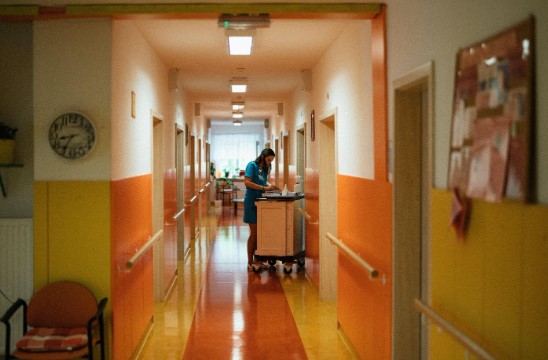In the intricate and fast-paced world of healthcare, hospital efficiency is not just a goal to strive for – it’s a necessity. For healthcare administrators, the challenge lies in balancing high-quality patient care with operational efficiency. This task, while daunting, is vital for the sustainability and effectiveness of healthcare services. From embracing technology to streamlining processes, there are several strategies that healthcare administrators can implement to enhance the efficiency of hospitals. In this article, we explore some of these key strategies, shedding light on how administrators can lead their facilities toward greater efficiency and improved patient care.
Table of Contents
1. Embracing Technology and Innovation
One of the most impactful ways to boost hospital efficiency is through the adoption of cutting-edge technology and innovation. Healthcare administrators are increasingly turning to technological solutions like electronic health records (EHRs), telemedicine, and automated patient management systems to streamline operations. These technologies reduce manual tasks, minimize errors, and improve communication between departments. In an era where digital health is becoming the norm, staying updated on technological advancements is key for administrators aiming to keep their facilities efficient and competitive.
2. Advantages of Further Education
Advanced education equips administrators with the latest knowledge and skills in healthcare management, policy, and strategy. For them, pursuing further education, such as an online master of health administration, can be a game-changer in improving hospital efficiency. By understanding modern healthcare challenges and solutions, administrators can implement practices that drive efficiency. Online programs offer the flexibility to continue working while learning, allowing administrators to apply new insights in real-time to their hospital operations.
3. Streamlining Hospital Processes
Efficiency in hospitals is often about the smooth functioning of various processes. Healthcare administrators play a pivotal role in reviewing and optimizing these processes. This includes streamlining patient admissions, improving record-keeping systems, and refining discharge protocols. By simplifying and standardizing these procedures, administrators can reduce wait times, decrease administrative burdens, and enhance patient and staff satisfaction. The key is to identify bottlenecks and implement targeted solutions that make processes more efficient and effective.
4. Effective Resource Management
Another important aspect of hospital efficiency is the effective management of resources. This includes human resources, medical equipment, and supplies. Healthcare administrators must ensure that staffing levels are optimal, equipment is well-maintained, and supplies are adequately stocked and efficiently used. By closely monitoring and managing these resources, administrators can reduce waste, cut costs, and ensure that the hospital runs smoothly. Effective resource management also involves anticipating future needs and planning accordingly, which is vital in the fast-evolving healthcare sector.
5. Improving Patient Flow
Optimizing patient flow within the hospital is essential for reducing congestion and improving patient experience. Healthcare administrators need to develop strategies for managing patient admissions, transfers, and discharges efficiently. This might involve using data analytics to predict patient influx and adjusting staffing levels accordingly, or redesigning physical spaces to improve movement within the facility. Effective patient flow management not only improves the efficiency of hospital operations but also significantly impacts patient satisfaction and outcomes.
6. Creating a Collaborative Work Environment
A collaborative work environment is key to improving efficiency in healthcare settings. Healthcare administrators can create this by encouraging open communication and teamwork across all departments. By promoting interdisciplinary collaboration, administrators help make sure that care is coordinated and patient-centered. Collaboration also involves leveraging the expertise of various healthcare professionals, leading to more innovative solutions and streamlined processes. A culture of collaboration not only improves operational efficiency but also boosts morale and job satisfaction among staff.
7. Data-Driven Decision Making
In today’s healthcare industry, decisions backed by data are more likely to lead to successful outcomes. Healthcare administrators can utilize data analytics to gain insights into operational efficiencies, patient outcomes, and resource allocation. By analyzing trends and patterns, administrators can make informed decisions about where to focus efforts and resources. This approach leads to more strategic and effective management, ensuring that the hospital not only meets current needs but is also prepared for future challenges.
8. Investing in Staff Training and Development
Investing in the continuous training and development of staff is essential for maintaining an efficient hospital. Healthcare administrators should ensure that all staff, from frontline workers to department heads, receive regular training on the latest healthcare practices, technologies, and safety protocols. This not only keeps the staff updated and competent but also encourages a culture of continuous improvement. Well-trained staff are more efficient, adaptable, and able to provide high-quality patient care, which is the ultimate goal of any healthcare facility.
9. Prioritizing Preventative Care
Focusing on preventative care is a strategic way to improve long-term hospital efficiency. By investing in preventative health programs, healthcare administrators can reduce the incidence of chronic diseases and the demand for acute care services. This shift not only improves the overall health of the population but also reduces the strain on hospital resources. Effective preventative care strategies might include community health initiatives, wellness programs, and patient education. Prioritizing preventative care demonstrates a commitment to not just treating illness but also promoting health and well-being.
10. Engaging with Patients and the Community
Patient and community engagement is essential for tailoring services to meet the needs of the population served. Healthcare administrators can improve hospital efficiency by actively seeking feedback from patients and the community. This feedback can inform improvements in service delivery, patient care, and hospital policies. Engaging with the community also helps in building trust and encourages the public to take an active role in their health, further supporting preventative care initiatives.
In conclusion, healthcare administrators hold the key to driving efficiency in hospitals. The strategies discussed not only boost efficiency but also contribute to better patient outcomes and a healthier community.
The role of healthcare administrators is varied and requires a continuous commitment to innovation and improvement. By embracing these strategies, healthcare administrators can ensure that their hospitals are not only efficient and effective but also prepared to meet any unexpected challenges along the way.

